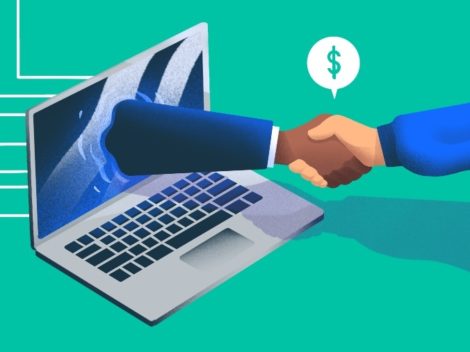As AI continues to revolutionize industries, the traditional SaaS pricing model, based on a per-seat or per-user approach, is rapidly becoming outdated.
With AI-driven tools now capable of handling tasks previously done by humans, fewer “seats” are required, making the per-seat model less relevant.
Salesforce 1 has already taken steps in this direction by announcing its new Agentforce platform, which will charge $2 per conversation instead of by user or seat.
This marks a shift toward value-based pricing, where businesses pay for actual outcomes rather than access to the platform. Other SaaS companies will need to adapt to these changes brought about by AI and automation to remain competitive.
Here are a few points to consider.
Adopt outcome or value-based pricing
As AI increases efficiency, SaaS companies should move away from charging based on the number of users and instead charge for the value the AI-driven product delivers.
Whether it’s the number of transactions, conversations or customer interactions handled by AI, this model ensures that companies only pay for the value they get.
This approach not only makes pricing more scalable, but also aligns with the growing expectation that businesses should pay for outcomes, not just access.
Transitioning to usage-based pricing requires companies to rethink their pricing strategies from the ground up. For instance, SaaS providers offering customer support tools could charge per interaction or ticket resolved by AI, ensuring that businesses only pay for the service they actively consume.
This helps SaaS providers attract a broader customer base, as smaller companies can access premium tools without the burden of paying for unused seats.
Offer AI-driven tiers or hybrid models
With fewer human seats needed due to AI, SaaS providers can implement tiered pricing based on the balance between human and AI tasks. Companies could bill for highly automated, AI-driven processes one way, while charging for human-heavy solutions differently.
For example, an HR software provider might offer price one way for fully AI-based recruitment workflows, while human-assisted screening could be priced another way.
This model gives businesses the flexibility to choose the right mix of AI and human involvement based on their needs and budget.
Some might care more about volumes which AI can do better, and some might value quality and human interaction with fewer volumes.
By adopting this model, SaaS providers can allow customers to scale their usage according to specific business needs, paying more as they incorporate AI tools to boost efficiency. This gives businesses a clear incentive to adopt more AI features while offering flexibility to those who aren’t ready to take the plunge just yet.
Reframe value propositions to highlight AI’s strategic advantages
SaaS companies must go beyond pricing adjustments and redefine their value proposition to emphasize the strategic benefits their AI solutions deliver.
For example, AI enables predictive insights, personalized recommendations and proactive decision-making that provide real competitive advantages.
A cybersecurity platform can highlight how AI improves threat detection, while a marketing tool can focus on how AI optimizes campaigns in real-time.
By positioning AI as a business enabler that drives success, SaaS companies can help their clients succeed and get more value, thus building deeper customer relationships and creating stronger monetization strategies.
Itay Sagie is a strategic adviser to tech companies and investors, specializing in strategy, growth and M&A, a guest contributor to Crunchbase News, and a seasoned lecturer. You can connect with him on LinkedIn for further insights and discussions.
Related reading:
- GRR Vs. NRR: Choosing The Right Metric For Your Business Strategy
- Are Products Really Better Than Services? Maybe It’s Time To Reevaluate
- 3 Strategic Steps Toward SaaS Profitability
Salesforce Ventures is an investor in Crunchbase. They have no say in our editorial process. For more, head here.↩

Stay up to date with recent funding rounds, acquisitions, and more with the Crunchbase Daily.



![Illustration of "clicking" on an AI brain {Dom Guzman]](https://news.crunchbase.com/wp-content/uploads/AI_Brain-470x352.jpg)

![Illustration of a tidal wave - Blank - Quarterly Reports [Dom Guzman]](https://news.crunchbase.com/wp-content/uploads/Quarterly-Blank-470x352.jpg)
![Illustration of a guy watering plants with a blocked hose - Global [Dom Guzman]](https://news.crunchbase.com/wp-content/uploads/quarterly-global-3-300x168.jpg)
67.1K Followers